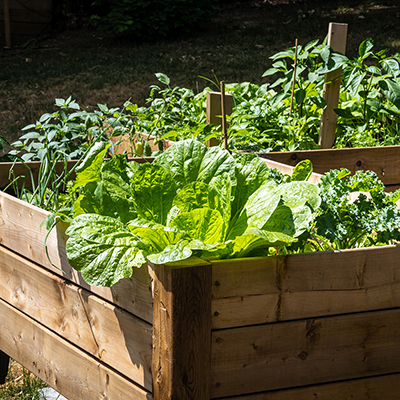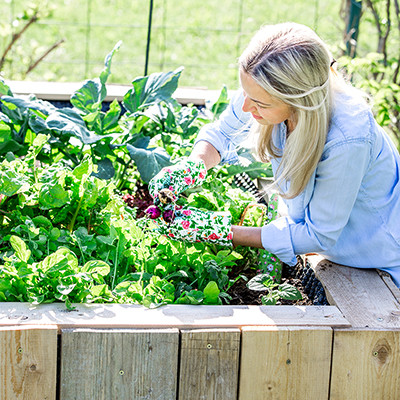How to Start a Vegetable Garden
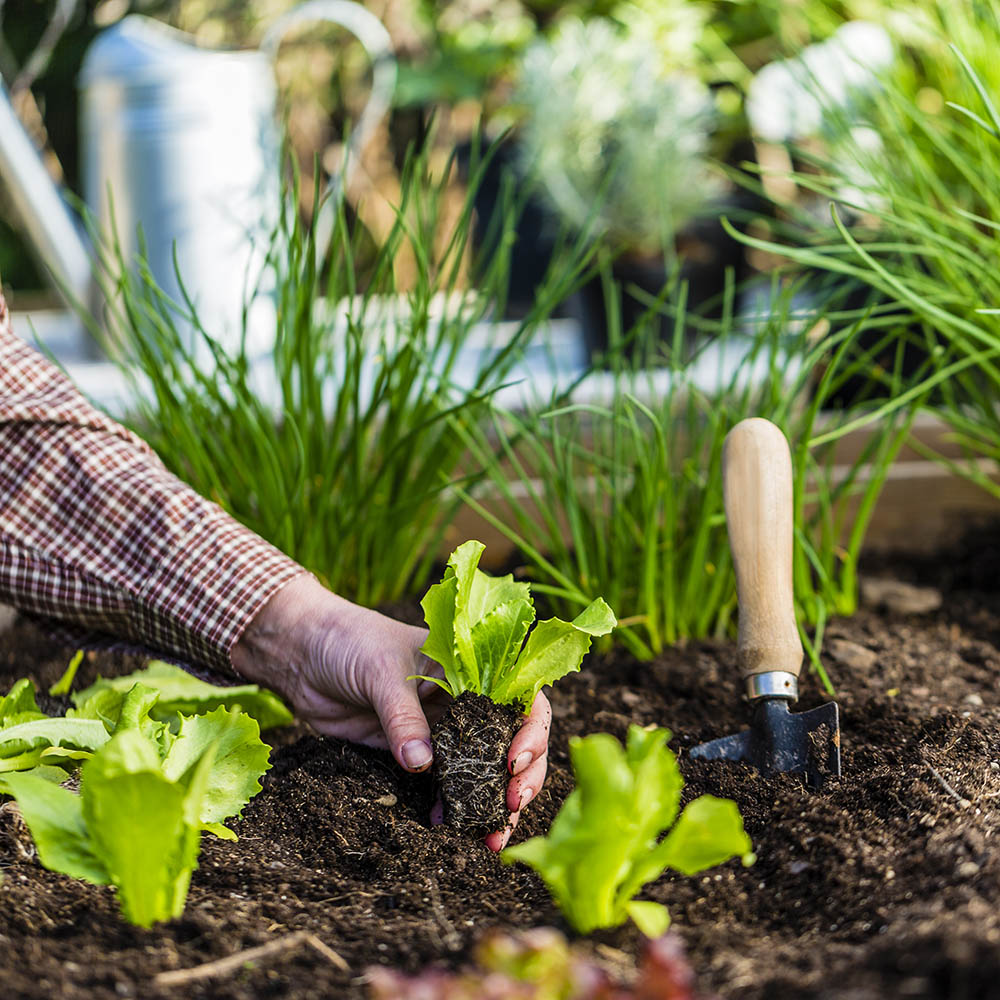
Last updated February 28, 2025
Growing a vegetable garden is a great way to bring fresh, nutritious veggies to your table. Knowing where your food came from is just one benefit of home vegetable gardening. You’ll also save money by buying less from the grocery store. If you have kids, vegetable gardening is a fun way to get the whole family out in the fresh air and sunshine.
It's easy to learn how to start a vegetable garden. You'll need a sunny garden spot, some plants and a few simple tools and materials.
Difficulty:
Beginner
Duration:
Under 2 hours
Table of Contents
Select a Garden Site
Prepare the Soil
Choose Vegetables for the Garden
Plant Your Vegetable Garden: Step-by-Step
How to Start a Container Vegetable Garden
Vegetable Garden Tips
Select a Garden Site
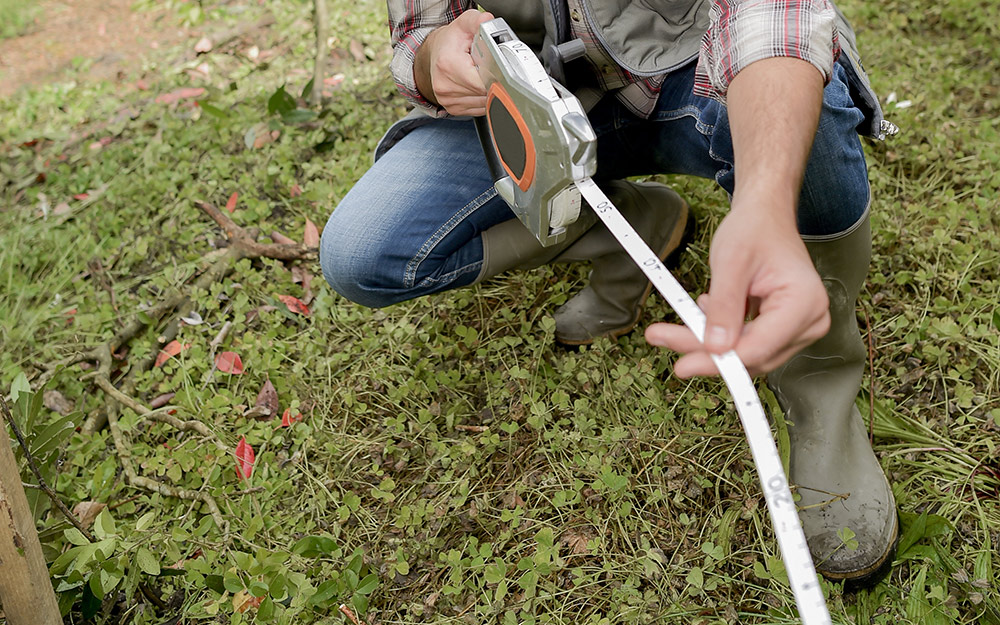
- When you’re starting your first vegetable garden, take a little time and watch the sun move across your yard. Most vegetables need a full six hours of sunlight a day, so choose an open area without a lot of trees around. If you live where the summers are very hot, it’s fine to do your vegetable gardening in a location that gets some afternoon shade.
- Measure your site and sketch it out, so you’ll know how much space to have to fill. This will help you estimate how many seed packets or plants you’ll need to buy. Your sketch can be a simple plan or a larger garden design that you’ll add to over the years.
- Think about the nearest source of water. You can use soaker hoses, a garden hose, a drip irrigation system or sprinklers to water your plants, but you don’t want to have to hand-carry large amounts of water a long way.
- Make sure your site has good drainage. If you have heavy clay or sandy soil, work in some organic matter, such as compost or bagged or bulk well-rotted manure. This will improve its texture, so that water drains more easily in heavy soils and doesn’t drain too fast out of sandy ones. Add about 2 to 3 inches of organic materials to heavy soils and 3 to 4 inches to sandy ones.
- If you’re planting in a lawn, and you want to save the grass to put somewhere else, use a sod cutter. Sod cutters are available for rent. They'll remove the grass in strips with the roots still attached.
Prepare the Soil
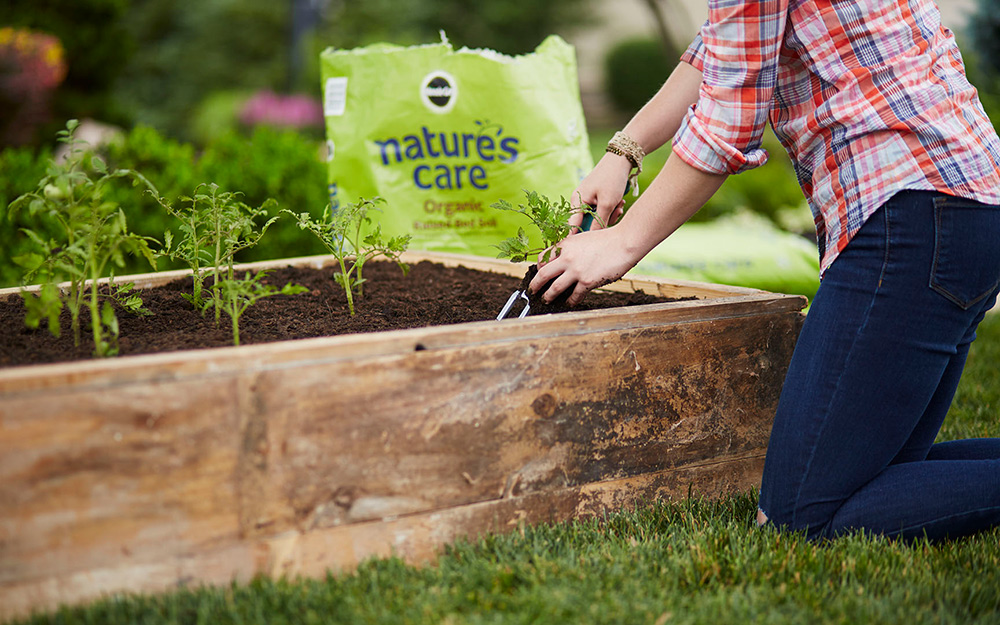
- Use a spading fork or shovel to dig and loosen the soil and break up large chunks of dirt.
- Rake your garden area and remove grass, weeds, rocks, roots and other debris.
- Mix in some fresh garden soil with a hoe.
- Want a shortcut for making your first vegetable garden? Plant in raised beds made from kits or build your own. Fill the raised beds with raised bed soil almost to the top, and rake it smooth before you plant. The bagged soil will already be loose and free of debris and clods, so you’ll be able to skip some of the soil preparation steps.
Choose Vegetables for the Garden
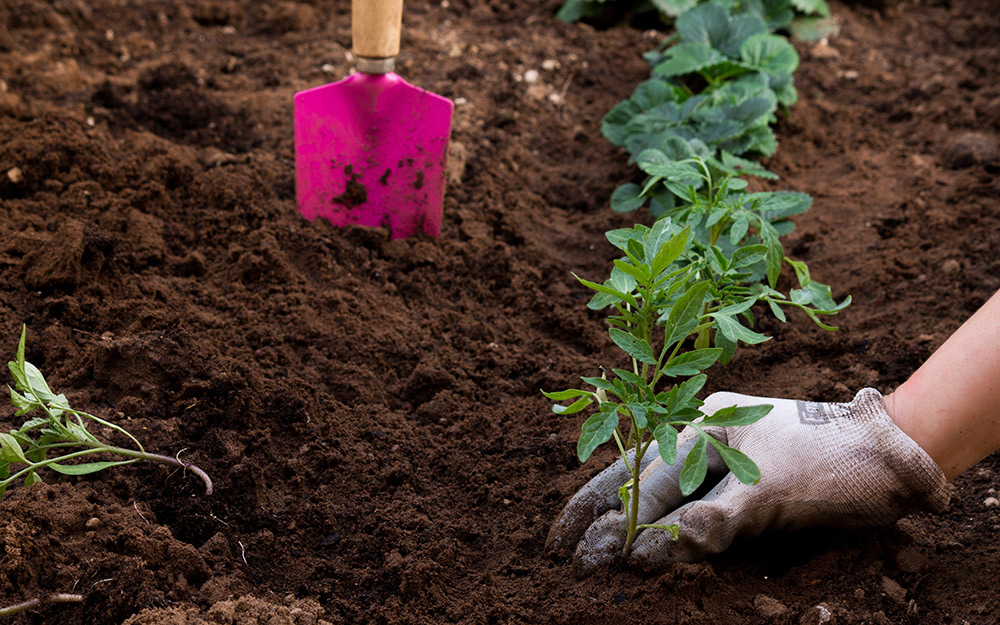
- Should you start your vegetable garden from seeds or plants? If you want to save money, start with seeds. You can sow them indoors six to eight weeks before the start of the season (that is, before the last expected frost in your area). Move your seedlings into the garden later, as directed on the seed packet. If you sow your seeds directly outdoors, space them as far apart and plant them as deep as instructed on the packet. The seeds of carrots, beans, lettuce and radishes are just a few that you can plant directly outside.
- If you want to save time, start with young plants and put them in your garden during the growing season (after all danger of frost in your area has passed). Some veggies, such as tomatoes, are sensitive to the cold and shouldn’t be grown outside until temperatures are reliably warm.
- Beets, lettuce, kale, cucumbers, peas, radishes, cherry tomatoes and green beans are some of the easiest vegetables for beginners to grow. Summer and winter squash are also good choices for first-time gardeners. If you grow zucchini, a type of summer squash, you’ll probably pick so many, you’ll wind up leaving them on a friend's doorstep.
- The best vegetables to grow are the ones your family will eat and enjoy. There’s no reason to plant Brussels sprouts if nobody likes them. Be sure to grow extras of your favorites if you want to freeze, can or dry some veggies to use during the winter.
- The best vegetable varieties to grow are also those recommended for your growing zone. Ask your neighbors which ones grow and thrive in their gardens.
- If you live where the growing season is short, look for veggies that will mature before your first frost.
- Also, look for varieties that resist plant diseases common to your area.
Plant Your Vegetable Garden: Step-by-Step
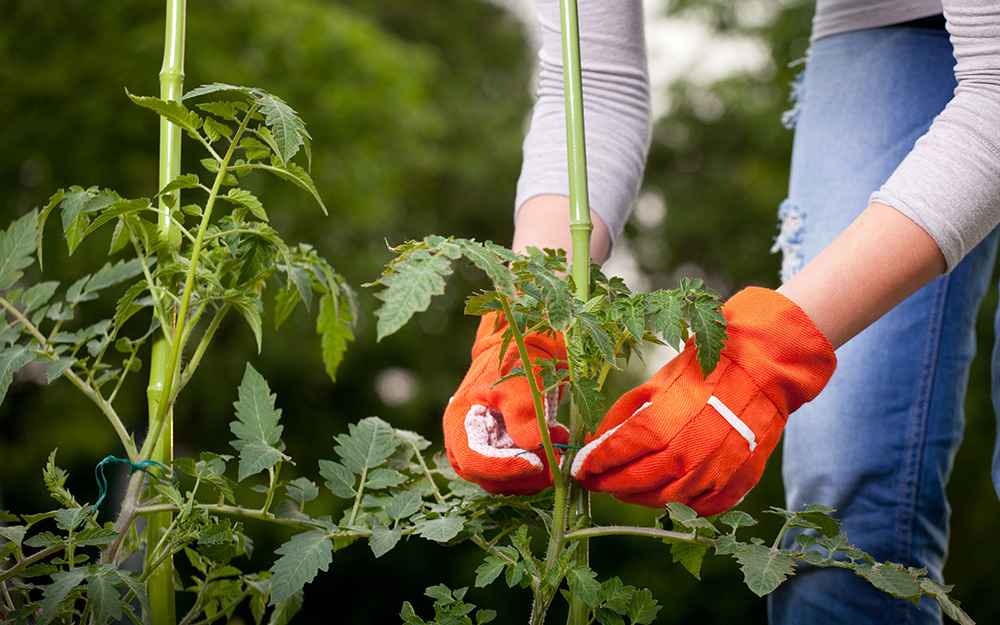
- When you’re ready to dig, use a garden trowel to make holes for your plants. Make the holes at least two times deeper and wider than the container the plant is in. Most plants should be spaced 2 to 3 feet apart, so they’ll have room to grow and get plenty of sunlight and air circulation.
- Put your plants in the holes and cover them with soil. Don’t bury them any deeper than they were in their containers. Gently press the soil down around them.
- Add stakes or trellises to support plants like tomatoes and beans.
- Water your plants or seeds to settle them in.
- Water again when the soil is dry 1/2-inch below the surface. You may want to add a drip irrigation system or soaker hoses to your garden. Add a timer and you won’t have to remember to turn them on and off every day. Smart timers can even check your local weather and skip a day if it’s rainy or will apply more water during dry spells.
- Avoid walking around in your garden when the ground is wet, so you won't compact the soil.
- Feed your plants with a vegetable fertilizer as directed on the label.
How to Start a Container Vegetable Garden
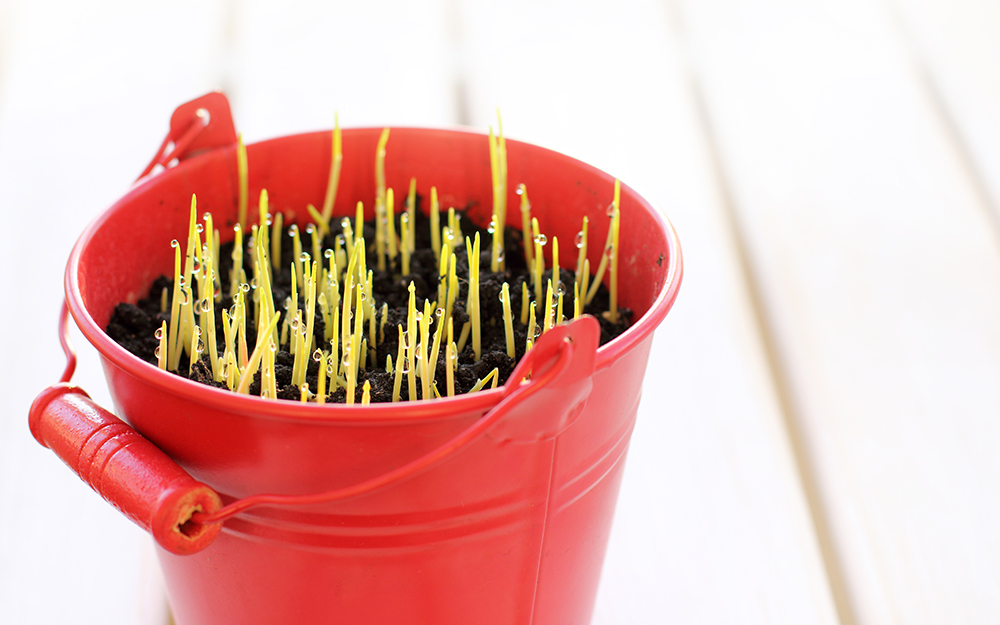
- If your space is limited, or you want to grow vegetables but don’t want to use raised beds, try a container garden.
- Use a five-gallon bucket as your container.
- Drill or punch 10 to 15 holes in the bottom to let excess water drain out.
- Fill the bottom with roughly 2 inches of gravel and top it with planting soil.
- Grow some seeds or one large plant per bucket. Two or three smaller plants can go in other buckets. Water them in thoroughly and water again when the soil is dry about 1/2-inch below the surface. Small tomatoes or eggplants would be good choices.
- Fertilize as directed on the fertilizer label.
- If you don’t get a full six to eight hours of sunlight a day in any one spot, move your container garden around the yard to follow the sun. Remember to give your veggies a little afternoon shade if you live where the summer sun is intense.
Vegetable Garden Tips
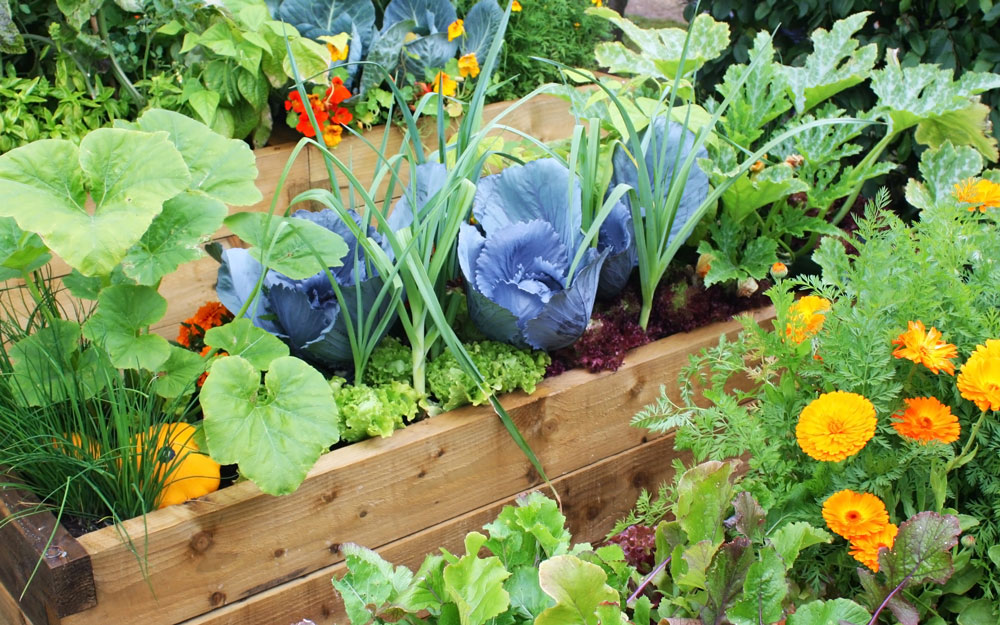
- You don’t have to plant all your vegetables at once. You can stagger your planting times, and re-sow most vegetable seeds every couple of weeks. This extends your harvest, so you can keep fresh veggies on the table throughout the season.
- Healthy soils that contains lots of good organic matter usually don’t need as much fertilizer as poor soils. Follow the directions on your product and don’t over-fertilize.
- Keep an eye out for pesky bugs and diseases. It’s easier to control a few insect pests, or treat a few unhealthy leaves, than to tackle a problem that has spread. For edible plants, use only organic pest and disease control products.
- If you see hungry squirrels or deer eyeing your veggies, try using fencing or netting to discourage them. To keep birds from feasting on your crops, use netting with very small openings, so they won’t get tangled up.
- Finish your vegetable garden with decorative edging or plant low-growing flowers or herbs around the edges to add color.
- Add another couple of inches of compost to your garden spot every year. Spread the compost evenly over your site.
- Before the season ends, go back to your garden plan or design and make notes about what you planted in each area. This will help you rotate your food crops next year to keep your soil healthy and discourage pests and diseases from building up in one place.
How to Water Your Vegetable Garden
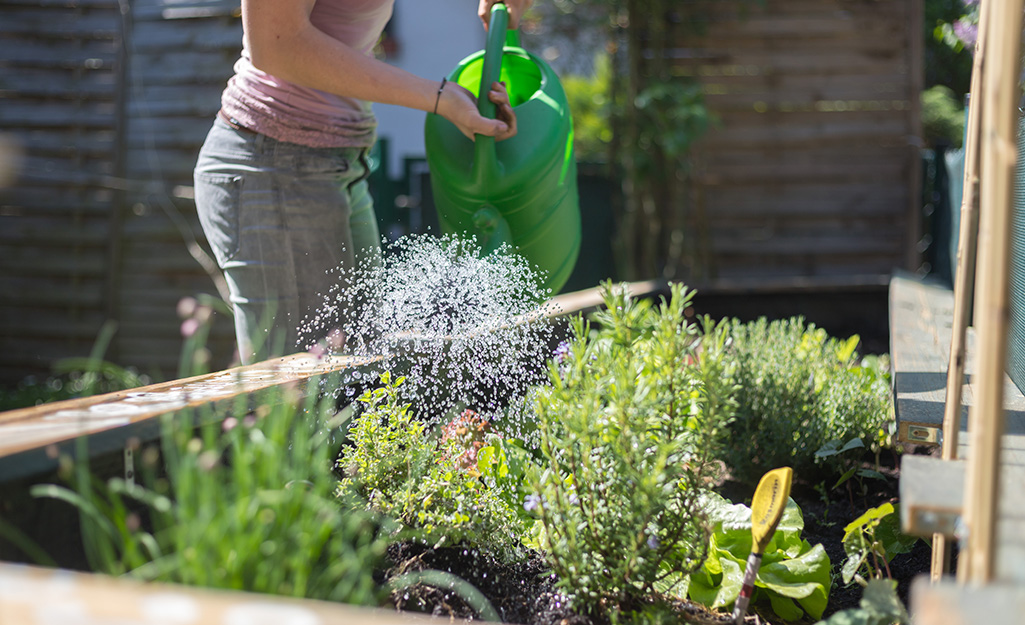
You can usually satisfy your plants’ thirst by watering two to three times a week, but in high summer you may need to water every day. Use these hot-weather watering tips to keep your summer vegetables
happy.
Here's how to water warm-season vegetables:
- Water in the late afternoon or early evening, so plants can spend the night recovering from the day’s stresses with an ample supply of water.
- Soak only the roots and keep the leaves dry to avoid leaf spots and other fungal diseases.
- Hand-water with a hose and long-handled watering wand in a small garden to easily direct water to the root zones. In larger gardens, soaker hoses or drip irrigation lines are essential watering equipment for hot-weather plantings. In hot weather, avoid using sprinklers, which are not very efficient and may encourage diseases that develop on wet leaf surfaces.
- Make a shallow, V-shaped furrow between rows and flood the furrows with water to help the water go directly to deep roots.
- Build doughnut-shaped circular berms, or raised banks, around widely spaced peppers and tomatoes to form a basin that retains water.
- Create sunken beds, sometimes called waffle beds, for summer plantings of beans and squash. Instead of shaping prepared soil into mounds, rake it into a series of square-shaped berms, like a waffle. Then plant inside the squares. In addition to catching water, the earthen enclosures shelter young plants from sun and wind.
- Keep container-grown vegetables from going thirsty by grouping them together in a plastic baby pool or galvanized tub. Fill the pool with a couple inches of water and the plants will drink it up. Allow the pool to dry during the day, because standing water invites mosquitoes.
Learn more about starting and growing tomatoes, shade vegetable gardens and veggies in containers with our gardening guides. Need supplies? The Home Depot delivers online orders when and where you need them.
